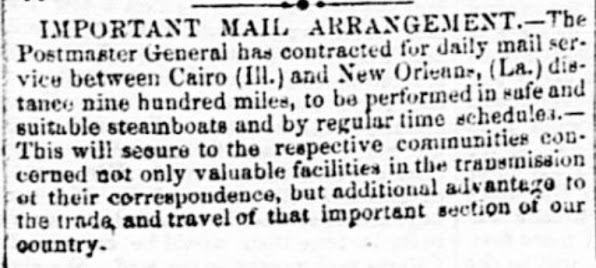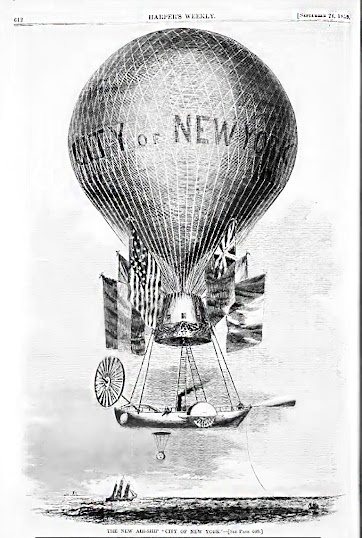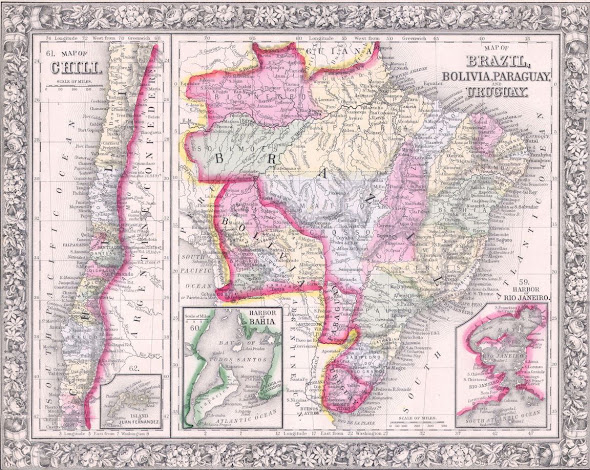The Post Office
POST
OFFICE
In the modern age of email and internet we have little concept of how important safe, quick mail delivery was for the development of commerce. The development of national brands of consumer items was not possible without quick reliable delivery.
A more subtle impact
the post office had on American infrastructure and commerce, was its ability to
let contracts to carry the mail. A mail
delivery contract often made the difference in whether a railroad decided to
extend a line to a particular area. Just as influential was the post office’s
decision to let contracts to ships carrying mail to England, France, Mexico and
other points. Congress was reluctant to
authorize money for the US Navy to buy or build steamships, (by the time the US
Navy had three steamships, the British Navy had several hundred.) When the Post office announced contracts to
carry mail abroad, ship owners had to commission steamships to win contracts. As with the railroads, a mail contract
created a subsidy making new equipment and routes feasible.
The Founding Fathers realized
establishment of a formal postal delivery system was a must. It was important
enough to be a branch of the Executive no less in rank than the Secretary of
State or the Treasury. In fact, the position of “Postmaster General” was a
cabinet level appointment until the 1960s.
The question of how to distribute newspapers had
been partly solved in 1792. America’s founders wanted the public to have more
access to news to become an informed electorate. Thus, postage rates for
newspapers were set at 1 cent each if delivered under 100 miles; and 1.5 cents
if farther. Normal postage for letters and parcels ranged from 6 cents to 25
cents. Bulk mail got preferred rates from the start.
But delivering newspapers depended on wagons or
just riders on horseback over rough roads, by canal and small coastal
schooners. Moreover, postage rates were set that the receiver of
mail paid for the postage. If the
receiver were not home or unreachable for some reason, the cost of delivery was
a loss to the post office.
In 1841, a private delivery company in London, England experimented with collecting delivery money in advance. To show delivery costs had already been paid, a special piece of paper, a “stamp,” was glued to the outside. A company in the United States imitated the experiment the following year. It was so successful that the Post Office turned to the method as well—though, the post office still allowed mail to be paid for by the receiver. To encourage the use of stamps, the post office charged two rates for delivery. If a letter were sent for the receiver to pay, the rate was much higher than if the letter were marked with a stamp as postage paid .
The first official US postage stamps were introduced
July 1, 1847, a 5 cents stamp for half ounce letters delivered less than 300
miles and a 10 cents stamp for distances up to 3,000 miles.
The local postmaster used scissors to cut each stamp from a
printed sheet of 200 and then had to apply glue separately to the back. It
wasn’t until 1857 that stamps were perforated.
The Open Hours May Vary...
SOME THINGS ARE NEW AGAIN DEPARTMENT: The Post Office
complained the telegraph was reducing the demand for postal service. Now, the
USPS blames the internet and email for falling demand.
By the late 1840s, mail moved faster than twenty years before. Steamboats and newly established railroads started winning contracts to carry mail. Contracts to carry mail between certain cities or points were lucrative and often a reward for political favors.
Sometimes, the mail was still late
Or
Postmasters helped themselves to free magazine subscriptions as this complaint
by Harper’s Magazine states
In the 1860s,
fears that stamps were being re used, brought about the practice of
cancellation, either with a round inked stamp made of cork or simply an
"X" made with a pen.
Postcards were first introduced in February 1861, costing only a penny to mail.
In an arrangement modern readers would find strange, letters, newspapers, and packages were not delivered to specific addresses. All mail was addressed to a particular post office near the recipient. People had to visit the post office to inquire if they had received any mail. Since most of the population was rural, so were the post offices. Generally, a dry goods or tavern owner held the contract to be the local postmaster, a great side business for most of them.
In urban areas, quite a bit of unclaimed mail
quickly built up. Newspapers would monthly or weekly publish lists of names of
those who still had mail to retrieve from the local post offices. In a further
difference from modern experience, the lists were divided into
“Gentlemen—general mail,” Gentlemen—business mail,” and “Ladies’ mail.”
A long list in the New
York Herald
Saturday June 6, 1857
Come pick up your
mail!
Free delivery to urban recipients did not start
until 1863. During the Civil War, a clerk in the Cleveland,
Ohio post office felt a huge emotional strain when people called for mail
and received military notices saying their son had died. Daily, there were pitiful, wrenching public
displays of grief in the long lines waiting to pick up mail. The clerks handing death notices to mothers
and fathers several times a day spurred one of the clerks to suggest, they take
those letters to the parents’ homes where their grief and shock would be less
public. It worked so well, the clerk was invited to Washington, DC to help set
up the first urban mail delivery to specific addresses. It would not be until
1902 that rural residents would get free delivery as well. (As a side note, nobody had a mail slot in
the door or a mailbox at the time. The
letter carrier was required to knock on the door and personally hand the mail
over.)
The influence
of local post masters was far greater than most modern historians seem to
realize. The local postmaster not only knew who was communicating
with whom—always a good stock in trade for gossip, they were also censors.
Postmasters could burn or return any items they deemed “Unsuitable,” “Immoral,”
or “Inflammatory” and were under no obligation to even report having done such
to the receiver or sender.
This created artificial separate silos of information. Southern postmasters routinely tossed or burned copies of “Uncle Tom’s Cabin,” or newspapers from the North. The only way a person in the South might hear of or even own a copy of Uncle Tom’s Cabin” would be for a visitor to bring it as a gift. A postmaster in Maryland turned in a preacher who had ordered a copy of "Uncle Tom's Cabin." The preacher was sentenced to ten years in prison.
Under agreements of exchange, Northern newspapers were generally let
through, but only to the local newspaper editors who could be reliably counted
on to excerpt the articles that were either inoffensive or to ridicule and
rebut articles on slavery or a host of other topics.
THE CIRCULATION OF INCENIARY
PUBLICATIONS—Washington, Dec. 7, 1859
The Postmaster General has received a letter from the postmaster at Falls Church, Va. In which, after referring to the opinion of the Attorney General of Virginia sustaining the constitutionality of the statute of the State, denouncing under heavy penalty the circulation of books, newspapers, pamphlets, &c, tending to excite the slave population to insurrection, he asks to be instructed as to his duty in reference to those documents, should they be received through the mails for distribution at the office of which he is in charge. The Postmaster General replies that the people of Virginia may not only forbid the introduction or dissemination of such documents within their borders, but if brought there in the mails, they may, by appropriate proceedings, have them destroyed. They have the same right to extinguish the firebrands thus impiously hurled in the midst of their homes and altars that a man has to pluck the burning fuse from a bombshell which is about to explode at his feet.
Northern post masters were not so strict, but nationwide, sending books on sex or crime was generally next to impossible.
Mail moved all sorts of ways. One lady wrote to Harper’s Magazine in 1863 about the sled dog mail delivery once a week in upper Michigan. A mail delivery contractor running a line between Raleigh, NC and Fayetteville, NC (about 55 miles apart) engaged in the common practice of making money on the side taking passengers along. Steam packet boats and sailing packets delivered mail and people along the East Coast.
Some mail even moved by sled dog.
MACKINAC MICH.
DEAR SIR: Would you like to know the mode of conveyance by which the Lady’s Book reaches these almost Arctic Regions? It is by dog-teams. From Saginaw to this place, a distance of over two hundred miles, our mail matter, in the winter season, is brought to us on men’s backs and dog-teams. We have a weekly mail; and each weekly party consists of two men and three dogs, with a long traine de glisse, to which the latter are harnessed. This traine is generally made of an oak board two or three eighths of an inch thick, about a foot wide, and eight or ten feet long, with the forward part nicely turned up. On tis are strapped mail-bags, and the provisions for the men and dogs. This would sound strange to those who live in well-improved parts of the country. Yesterday the thermometer ranged between four and twenty degrees below zero; and this morning stood twenty-four degrees below. The ice in these straits, and Lake Huron vicinity, is from eighteen to twenty-eight inches thick; no sign of an early opening of navigation. I hear that your subscribers at this place are much pleased with Lady’s Book. A.H.
and some by buggy
TO TRAVELERS
The Subscribers convey the Mail between Fayetteville, NC and
Barclayville, NC in a Buggy and can accommodate one or two passengers. The route is
by way of Kingsbury, Bunn’s Level, Summerville, and Neill’s Creek. The day for
leaving Fayetteville are Tuesdays, Thursdays and Saturdays at 6o’clock a.m.—Returns
Monday, Wednesday and Friday evenings. Fare from Fayetteville to Summerville $2.
J.R.HARRIS A.PARKER Aug 25, 1855
Mails to Europe
October 27, 1847
Famously, the Pony Express delivered mail twice a week and back from St. Joseph, Missouri to Sacramento, California 1,840 miles in ten days. The contractor to the Federal government for the Pony Express, was deeply religious and forbade employees from riding on Sunday. The contractor sued to cut the service to once a week, but the US Attorney General ruled, mail service was too important to be cut back. Indian raids burned a number of the Pony Express stations throughout Utah and eastwards for a time until a company of Utah Militia were sworn into US Army and successfully stopped raids. Famous and romantic as it was, the service lasted only from 1860 through part of 1861. A transcontinental telegraph had been set up and Congressional approval to build the Transcontinental Railroad doomed the romantic service.
A New Mail Route to California
Then, as now, there were “dead letters”
and people learning the hard way to not send cash through the
mail.
Toward the end of the Civil War the post office attempted another innovation, one which would come to revolutionize the speed with which the mails travelled. The American Civil War was the first major war in which soldiers on both sides were literate to some degree. This meant there was a huge rise in the number of personal letters.
The Railroad Mail Service –the RMS—started. Clerks would ride in a special mail car,
sorting mail as the train went from station to station. Sometimes, the train
would not even stop to let off or pick up mail.
Outgoing mail was hung on a hook the mail car staff would catch and
detach while either tossing out mailbags onto the platforms of stations as they
went through or hanging mail onto hooks along the platforms as the train passed
through. Delivery times dropped
dramatically. Instead of taking hundreds
or thousands of 200 lbs. mail sacks to one large distribution point, unloading
the bags, sorting them, and then reloading them onto various trains heading in
the right direction, now the mail was sorted as it moved.
The RMS clerks had to pass tough qualifying tests grading clerks on how accurately and quickly they could “throw”—that is, sort—mail accurately. It was not enough to simply be able to decide on whether a letter or parcel went to, say, Altoona, Pennsylvania. A RMS clerk had to know from his train how to route the letter to end up in Altoona by the fastest route. This required a huge amount of memorizing which rail lines carried which mails in which directions and at which times. Moreover, if a clerk were notified a particular train that would normally be the one to take the mail to Altoona had been delayed, the clerk had to know an alternate route. Not only was the work physically demanding—mail had to be sorted constantly as the train moved with 200 lbs. mail sacks moved around, they had to be human computers.
The pay was good, but the work was dangerous. It wasn’t until the early 20th century that the mail cars would be made of steel rather than basically flat cars with wood frames around them. The mail car was just behind the locomotive and coal cars, in line with the most sparks, and the there was fire danger in the car itself since the cars were heated with pot belly stoves. Clerks worked shoulder to shoulder. In the event of wrecks, the mail cars were frequently the most damaged, sandwiched between the locomotive and the steel passenger cars.
Criminals quickly
recognized robbing the mail train was a far more lucrative heist than holding
up a stage coach or horseman.
The post office hired and trained hundreds of new “postal
inspectors,” postal police really, one of the first Federal law enforcement
agencies. The postal inspectors quickly
developed a reputation for always getting their man. Steal a dime from the post
office and they’ll spend a million dollars to catch you, one thief said.
Mail to the South Cut Off
April 15, 1861
With the formation
of the Confederate States, a new postal system was started. People could bid to
be postmaster for the CSA and bid for routes. The first Confederate Post Master General, John H.
Reagan of Texas, had all the US stamps returned to New York and Washington June
1, 1861 along with the money collected for their sale! (Reagan, by the way, was the only Confederate
cabinet member who served the entire war in the same post. Amazingly, the Confederate post office turned
a profit!)
With the outbreak of the Civil War, Congress realized
Southern post masters held millions of dollars of US postage stamps. To prevent
their use, the US issued a series of new stamps and older stamps were declared
no longer valid.
As the war
progressed and services collapsed, private delivery filled the need.
The Confederacy never minted coins.
Consequently, US coins were hoarded, and “encased stamps” came into use.
Postage stamps in small cardboard folders were traded as coins in both North
and South where coins were in short supply.
Small change was not the only thing in short supply in the South. Paper was so scarce letters were written on old cotton invoices or whatever scraps that could be found. Letters were written leaving every other line blank. The receiver would then turn the paper upside down and write a reply in the blank lines.
If you have a compulsion to read out of date government manuals, here is a link to the complete 1861 “Instructions for Post Masters of the Confederate States of America.”





















Comments
Post a Comment